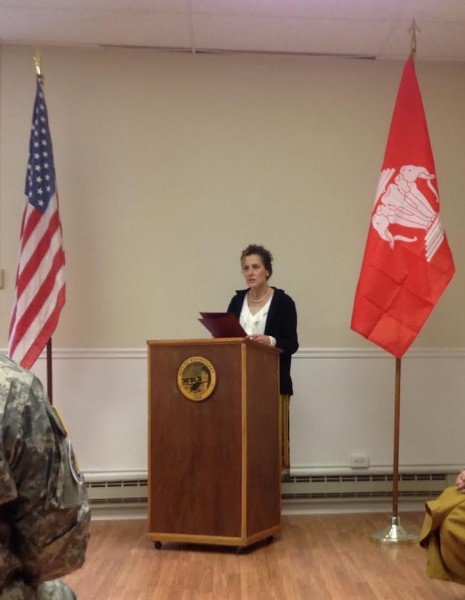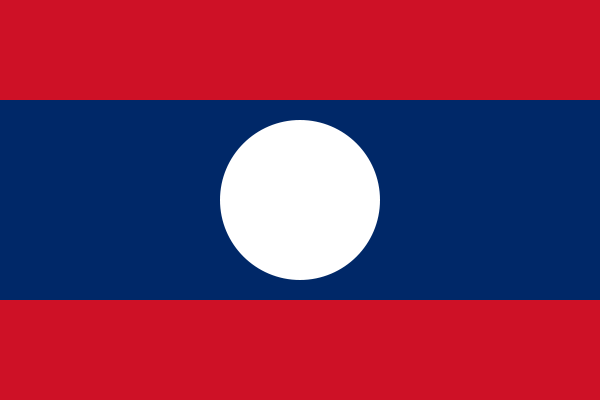
On Wednesday, December 2, 2015, the Woonsocket Call published an article titled “Freedom still rings for city’s Laotian refugees.” The article highlights an event held at Woonsocket city hall celebrating “Lao Heritage and Freedom Day” on the anniversary of the end of the Lao civil war. Usually, I don’t care much for articles that highlight dog and pony shows orchestrated by politicians—but this time, it was different.
In the article, it states “the inspiration for the event came from Vanmala Phongsavan, a prominent member of the city’s Laotian community and father of Vimala Phongsavanh, a former member of the School Committee and the assistant director of Common Cause.” The problem is that “Vanmala Phongsavan,” who up until last year was known as “Thongsavan Phongsavan,” is not my father. Besides being really bizarre, it was extremely offensive to my family and I for many, many, different reasons.
As I continued to read, it just became very clear to me that it was bigger than an ignorant error by a newspaper, I realized that Woonsocket doesn’t get it.
Dispelling the “model minority myth”
The article mentions the city’s “sizable Laotian community.” To be exact, according to the 2010 U.S. Census Bureau, there are 36,763 Asians living in Rhode Island, approximately 16,787 of them are Southeast Asians (Burmese, Cambodian, Filipino, Hmong, Laotian, Thai, and Vietnamese), 3,380 Laotians live in Rhode Island, and 1,430 live in Woonsocket.
It continues to write, “Southeast Asians who resettled in America after the war have been able to rebuild prosperous new lives and raise children who are now adults working in all kinds of high-skilled jobs.”
Where are they getting their facts?
According to the Southeast Asian Resource Action Center (SEARAC) “Southeast Asian American Education Needs in Rhode Island” report, Southeast Asian Americans have lower rates of education attainment when compared to the Asian population and the total population in Rhode Island. For instance, 4.6% of Cambodian and 10.4% of Laotian Americans over the ages of 25 had a bachelor’s degree compared to 18.5% of the total population and 23.2% of Asian respondents.
The majority of Southeast Asian Americans in Rhode Island live in poverty. 21.1% of Cambodian and 19.4% of Hmong American families lived in poverty in Rhode Island compared to 8.4% of total families in Rhode Island.
Asian Americans as a whole have statistically been seen as overachievers, and the “model minority.” But when data are disaggregated, it tells a different story for Southeast Asians. This is why we need better data; we need to know our smaller communities better—to truly meet their needs and help them prosper.
Of course the Laotian community has had our opportunities and successes, and some have been able to seize their own version of the American dream—but not enough.
“Culture day” does not make you culturally competent
From the article, it seems like the city of Woonsocket tried really hard to celebrate its own version of “culture day,” but failed. It interjected itself into the middle of something that it didn’t understand. It made a global political statement by celebrating the country’s old flag, but not its current flag. There are some of us, who would actually like to see our Laotian community in Rhode Island united, these types of events only add to the tension.
“From 1964 to 1973, the U.S. dropped more than two million tons of ordnance on Laos during 580,000 bombing missions—equal to a planeload of bombs every 8 minutes, 24-hours a day, for 9 years – making Laos the most heavily bombed country per capita in history,” according to one account. “The bombings were part of the U.S. Secret War in Laos to support the Royal Lao Government against the Pathet Lao and to interdict traffic along the Ho Chi Minh Trail. The bombings destroyed many villages and displaced hundreds of thousands of Lao civilians during the nine-year period. Up to a third of the bombs dropped did not explode, leaving Laos contaminated with vast quantities of unexploded ordnance (UXO). Over 20,000 people have been killed or injured by UXO in Laos since the bombing ceased. The wounds of war are not only felt in Laos. When the Americans withdrew from Laos in 1973, hundreds of thousands of refugees fled the country, and many of them ultimately resettled in the United States.”
Did the city of Woonsocket know that by celebrating “Lao Heritage and Freedom Day” that they might have offended some people who still suffer the trauma of what the U.S. did to their country and their entire refugee experience? Our community is still at war and there will never be any winners. We are all still healing from the results of war, death, and loss. There are also those who still communicate with their families in Laos, who want to travel to Laos, and others who are trying to work on solving global issues together with the country of Laos with ambassadors and other global leaders. Celebrating “Lao Peace” day would have been at least a little less offensive.
How can we expect any type of world peace if we make global political statements without understanding the bigger implications? I think we all agree that our democracy is great, the best in the world. But in order to accomplish anything, we must be tolerant of other values, beliefs, and political ideologies—as different as they may be from ours.
There’s Hope
I am one of Woonsocket’s biggest fans, and I believe that one day it can get out of its own way so that progress can happen. It’s not just about the Laotian community; it’s about all communities of color. If the city of Woonsocket wants to really change outcomes for people of color, it needs to stop celebrating “culture day” and begin to take apart its systematic racism; it ultimately needs a democracy that is truly representative of the people it serves.
There’s a lot to do in Woonsocket, but here are just some initial thoughts for engaging more people of color:
- Hiring people of color: Woonsocket’s administration is very white, it can start by hiring people of color to its administration, and being more transparent about hiring and appointing processes;
- Civic engagement: Woonsocket needs civic engagement initiatives to get more people of color engaged in our American democracy;
- People of color in local leadership: Woonsocket needs to elect people of color, and more people of color need to run; currently, all elected officials representing Woonsocket are white;
- Task force on Diversity: Woonsocket needs a task force on diversity with the single mission of hiring and engaging more people of color in Woonsocket;
- Disaggregate data: let data drive decision and policy making;
- Cultural competency training for the city’s administration: this should be obvious.

